Joomla, Drupal or WordPress – Which Is The Best CMS?
- By
- Last updated:
- Leave your thoughts
Trying to choose between Joomla vs Drupal vs WordPress to create your website?
By the numbers, these are the most popular open-source content management systems (CMS) out there, and all three can help you to build a custom website to meet your needs. But they all have different strengths and weaknesses.
While it’s possible to migrate between these tools if you change your mind in the future, it’s a messy and imperfect process, so you’ll want to avoid it if at all possible.
Basically, choosing the best CMS for your website is a big decision, so you’ll want to spend time weighing the pros and cons of each platform before you make your choice.
That’s what this post is about — by comparing Joomla, Drupal and WordPress in several key areas, I hope you’ll have a better understanding of these three platforms and which is right for your needs.
Table of Contents
Joomla vs Drupal vs WordPress: What’s the Same?
Before I get into the differences, I think it’s first useful to talk about what’s the same across all three of these platforms.
First, all three are content management systems. That means what the name suggests — they help you to manage your content without needing to work directly with code. You can add your content on the back end using a simple editor and the CMS will handle properly displaying it to visitors according to your settings.
Second, all three are self-hosted tools*, which means you’ll take the software and install it on your own web hosting.
You’ll have full access to all of the underlying code, which gives you a lot of flexibility. But, at the same time, you’ll also be responsible for maintaining and securing your site (or hiring someone to do it for you).
This is in contrast to popular hosted website builders, such as Squarespace and Wix. With those tools, the service handles everything for you — you never need to interact with the underlying code (nor do you have the ability to).
Basically, WordPress, Joomla and Drupal are all a lot more like each other than they are like Squarespace or Wix.
Third, all three are free and open-source, meaning anyone — yourself included — can go to the respective project website, download the full source code and modify it however they want. You’ll never need to pay a dime for the core software, although you may need to pay for third-party extensions.
*Note: We’re talking about the open-source WordPress software at WordPress.org, which is different from WordPress.com.
Joomla vs Drupal vs WordPress: What’s Different?
Now, let’s get into the fun part and talk about how these platforms are different. I’ll break this into five sections:
- Market share and popularity
- Ease of use
- Extensibility
- Costs
- Security
Then, at the end, I’ll give some recommendations on who should choose each tool. Those recommendations will highlight some additional differences that are hard to fit neatly into categories.
Market Share and Popularity
When it comes to the respective popularity of these three platforms, there’s really no competition:
WordPress is the most popular CMS by a huge margin. It’s not even close.
According to W3Techs, here’s how they rank as of April 2020:
- WordPress — 35.9% of all websites and 63.2% of websites with a known CMS.
- Joomla — 2.4% of all websites and 4.2% of websites with a known CMS.
- Drupal — 1.6% of all websites and 2.8 of websites with a known CMS.
There’s also another trend to pay attention to here:
WordPress is growing in market share, while both Joomla and Drupal are declining.
Here’s how the overall usage of all three platforms has changed since 2013:
| 2013 | 2014 | 2015 | 2016 | 2017 | 2018 | 2019 | 2020 | |
| WordPress | 17.4% | 21% | 23.3% | 25.6% | 27.3% | 29.2% | 32.7% | 35.9% |
| Joomla | 2.8% | 3.3% | 3.3% | 3.3% | 3.4% | 3.2% | 3.0% | 2.4% |
| Drupal | 2.3% | 1.9% | 2.0% | 2.1% | 2.2% | 2.3% | 1.9% | 1.6% |
All of this information also comes from W3Techs.
In a nutshell, WordPress has more than doubled in popularity since 2013, while Joomla and Drupal are both sitting lower than they were in 2013.
What’s behind the sudden drop-off of both Joomla and Drupal from 2019 to 2020? While I don’t have any evidence of a causal relationship, this change suspiciously coincides with big market share growth in both Squarespace and Wix.
Now, WordPress being popular doesn’t automatically mean it’s the best CMS. But I do think popularity should play a role in your decision, because popularity becomes a positive feedback loop at a certain point.
For example, WordPress’s popularity brings benefits such as:
- developers who want to contribute to the core software
- developers who build extensions and themes for the WordPress platform
- convenient services (e.g. managed WordPress hosting that makes it a lot easier to host a site)
- community resources to teach you about WordPress (such as the blog you’re reading right now).
On the other hand, because Joomla and Drupal are declining in popularity, we may start to see the opposite happen for those platforms. I certainly don’t think they’ll be going away any time soon, but it might be that fewer resources flow in their direction if they continue to lose market share to WordPress and hosted website builders.
Overall, I don’t think popularity should affect your decision by itself, but if, for example, you think both WordPress and Joomla can achieve what you need, picking WordPress could be a better decision because it’s a growing platform whereas Joomla isn’t.
Ease of Use
In terms of ease of use, I’d rank these three in this order, from easiest to use to least easy to use (comparatively — that doesn’t mean necessarily any of them are overly difficult):
- WordPress
- Joomla
- Drupal
WordPress
WordPress is something anyone can effectively use — that is, you don’t need to be a developer or technical user to create a website with it.
A big part of this is that the WordPress platform itself is simpler. This is also another benefit of WordPress’s popularity. For example, many hosts offer features to help you to both install and update WordPress.
The WordPress dashboard is pretty easy to grasp, and doesn’t include an overwhelming number of settings:
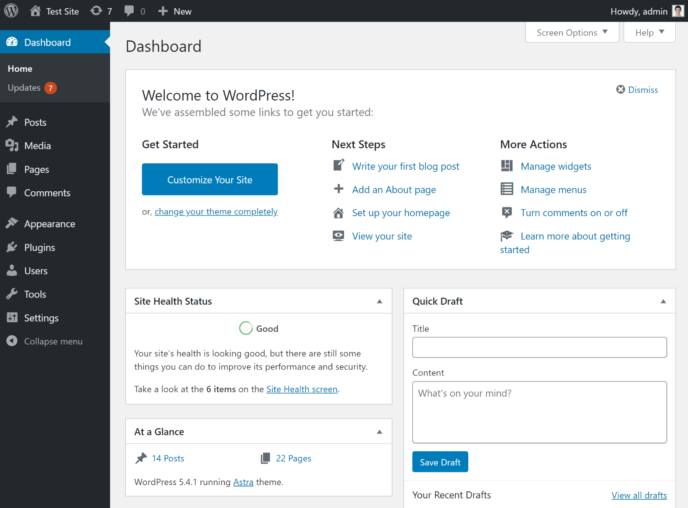
As of WordPress 5.0, the content editor is also a lot easier for non-technical users to create complex designs and layouts. It uses a block-based approach, which makes it easy to include columns, buttons and more:
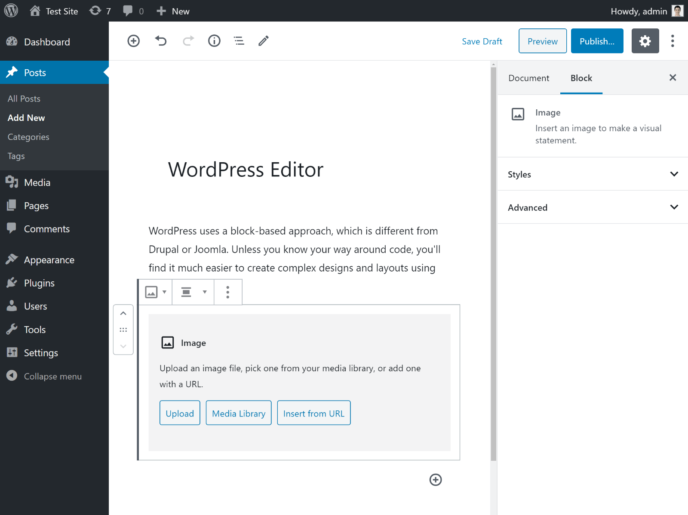
Joomla
I don’t find Joomla to be quite as easy to use as WordPress, but I think it’s still something that a non-developer could use to build a good-looking website.
The Joomla dashboard has a little more going on in terms of out-of-the-box settings, but it’s still fairly easy to navigate. For example, Joomla lets you manage user access permissions from the dashboard by default, whereas you’d need a third-party extension to do that with WordPress:
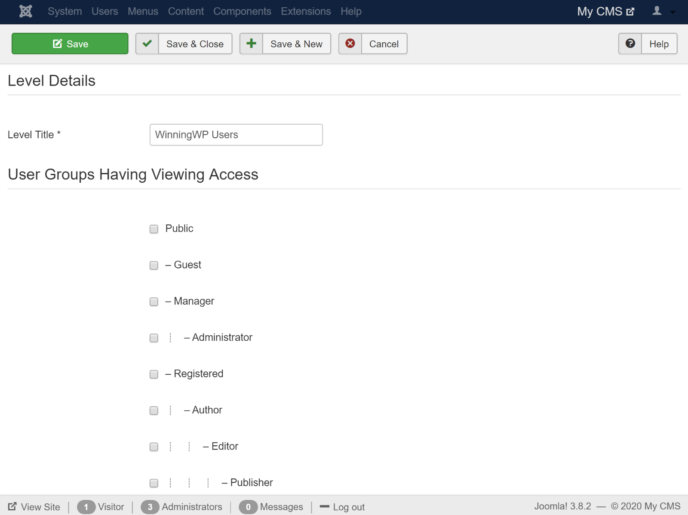
WordPress seems to leave more of these advanced features to third-party plugins, which is why it’s out-of-the-box experience is a bit simpler.
To add content, you’ll use a WYSIWYG text editor (which is similar to the older WordPress editor that some sites still use):
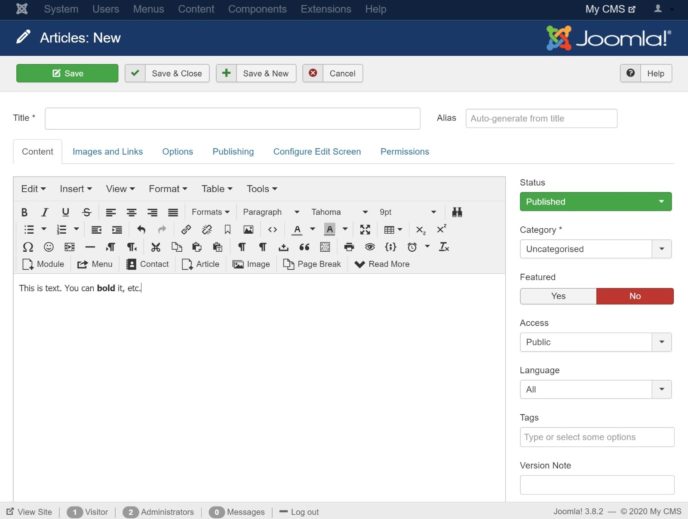
Drupal
I think there’s a big drop off in ease of use between WordPress/Joomla and Drupal. If you’re not a technical user and/or you’ve never built a website before, I think you’ll struggle to effectively use Drupal.
Drupal is a better option for agencies and freelancers who are developing sites for clients — it’s not a great option for a person who’s just looking to get online with their own website.
For example, in the Drupal dashboard, you can set up a block layout, which gives you a lot of control over the layout of your site. However, for non-technical users, I think this type of back-end interface can be a little confusing:
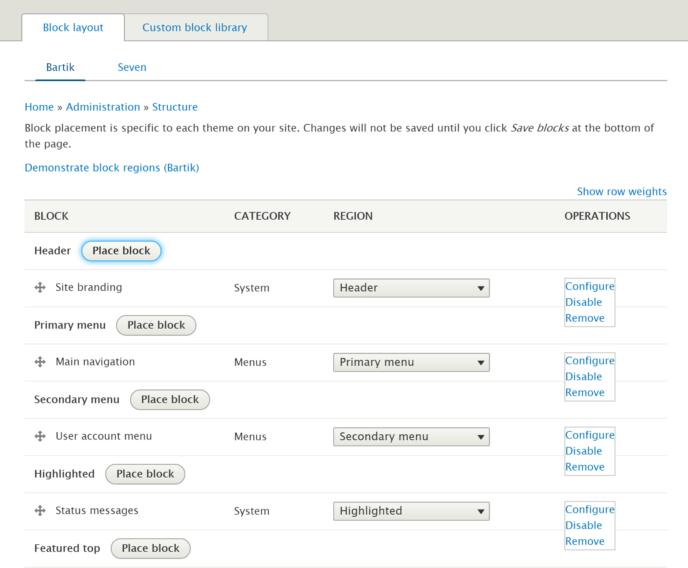
Similarly, the content editor, while totally functional, isn’t the most user-friendly tool for casual users, as it’s a very stripped-down editor:
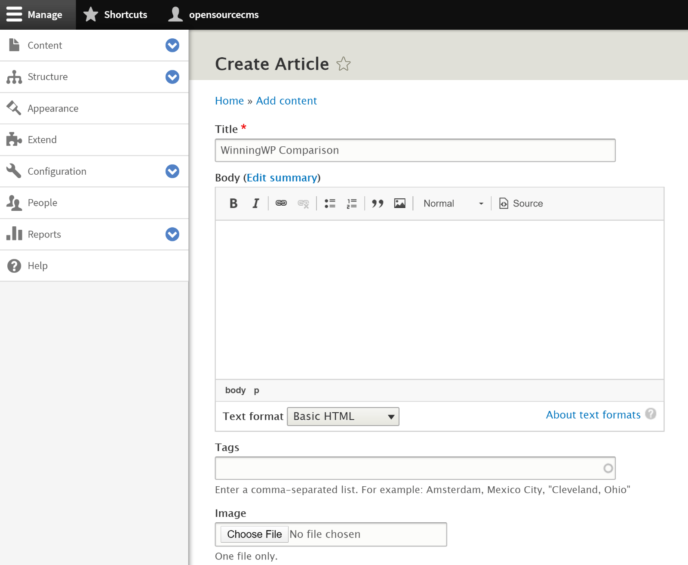
Try It Yourself
If you want to test drive the dashboard experience of all three platforms, there’s a neat site called OpenSourceCMS.com that lets you try out all of the platforms without installing the software. Here are the links to each dashboard:
Extensibility
If you want to go beyond the features in the core software, all three of these platforms offer add-ons that come in two flavors:
- Add-ons that add new functionality.
- Add-ons that change how your site looks.
They do use slightly different names:
- WordPress uses plugins (functionality) and themes (design).
- Joomla uses extensions (functionality) and templates (design).
- Drupal uses modules (functionality) and themes (design).
In terms of raw numbers, WordPress leads in both categories — which makes sense because of its popularity.
To compare the numbers of extensions, I’ll use numbers from each platform’s official directory. This isn’t a perfect comparison because you can also find add-ons from third-party sources and marketplaces, but it should give you an idea of how they stack up:
- WordPress’s official directory lists 56,040 plugins and 7,472 themes.
- Joomla’s official directory lists 7,571 extensions. There’s no official template directory.
- Drupal’s official directory lists 45,287 modules and 2,860 themes.
Why does this matter?
Basically, it means you’ll probably have an easier time finding an extension that can do what you want it to if you use WordPress.
If you’re not a developer, this is especially important because you’ll rely on off-the-rack extensions to customize your site.
Costs
Because WordPress, Joomla and Drupal are all free open-source software projects, they all have the same basic costs. These are:
- Hosting — you need this to run the software.
- A domain name — this is your site’s permanent address. E.g. winningwp.com.
In terms of hosting requirements, there aren’t any big differences. For small sites, you could run all three platforms on cheap shared hosting, which costs ~$5 to $10 a month. As your site grows, though, you’ll need to upgrade.
Beyond hosting and a domain name, you may also need to purchase some premium extensions, depending on the features and design you want.
Again, you’ll find similar prices across all three platforms.
To gauge the price of each platform’s themes (or templates, in Joomla’s case), I looked at the best-selling theme list for each platform at ThemeForest:
Part of the similarity is because Envato pushed this price for a long time. However, you’ll see the same pricing similarities hold true even for themes not sold at ThemeForest.
It’s harder to compare prices for functionality-focused extensions because there are huge variations — even within the same platform. But you’ll generally see similar pricing when it comes to those extensions as well.
All three platforms also have a wealth of free options when it comes to extensions.
Finally, there are potential costs if you can’t find an off-the-rack extension and need to hire a developer.
In general, WordPress has the cheapest developers out of the three platforms by a good bit, as summed up by this Tweet from Ryan Sullivan:
Tom McFarlin has an interesting post on why this may be.
Conversely, Drupal developers are the most expensive of the three, with Joomla sitting in between WordPress and Drupal. Joomla developers are more towards Drupal prices than WordPress prices, though.
Taking into account the entirety of the costs, WordPress will usually end up being the cheapest option in most situations because:
- it has the largest library of free themes and plugins
- many sites won’t require any custom development work
- WordPress developers are cheaper than Drupal and Joomla developers (if you do need custom development).
Security
Of these three tools, Drupal has the best reputation when it comes to security, which is why a lot of governments and security-conscious organizations choose Drupal (though you’ll also certainly find those organizations using WordPress and Joomla, too).
Every year, Sucuri, a popular website security service, publishes its hacked website report, which details the CMS breakdown of Sucuri users who have been infected*.
*This isn’t necessarily a representative example of all websites, but it’s still useful.
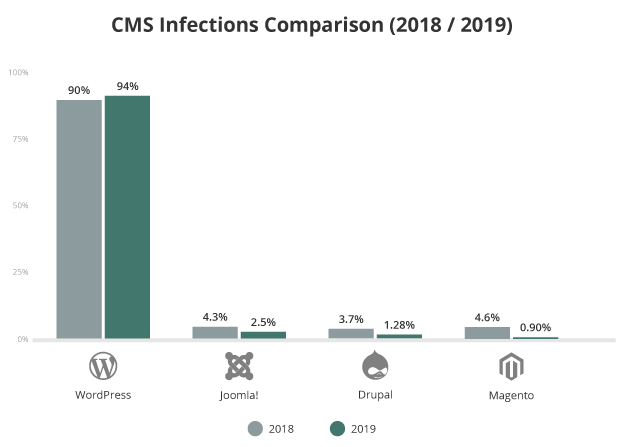
In 2019, WordPress users accounted for 94% of infected websites in Sucuri’s customer base. In contrast, Joomla was used by 2.5% of sites and Drupal by just 1.28%.
However, it’s important to note that all three platforms are secure if you set them up properly. For example, the official Whitehouse.gov website uses WordPress, as do many other organizations where security is essential.
Security issues mainly happen when you use vulnerable extensions and/or don’t promptly update your software.
Because of WordPress’s popularity, it makes sense that it accounts for most hacked websites, especially when you consider the following:
- WordPress attracts more non-technical users, who are more likely to install poorly coded extensions and/or not update the software.
- WordPress also attracts more focus from hackers because it offers a bigger ROI (if you find a WordPress exploit, you have a much larger pool of sites to infect).
Overall, Drupal has a slight edge in terms of reputation, but all three of these tools are secure if you set them up well.
Which Is the Best CMS? When to Use Each
Now, I want to get into some specific recommendations for when to use each platform. This will also give me a chance to touch on some other important differences between each CMS.
This is a tough section to write because everyone has a different opinion. A WordPress developer will tell you to always use WordPress, a Drupal developer will tell you to always use Drupal, and so on.
But here are where I think the differences are…
When to Use WordPress
Overall, I think WordPress should be the default choice for anyone looking to create a self-hosted website.
That certainly doesn’t mean everyone should use WordPress. It just means that, if you want to use Drupal or Joomla, you should be able to articulate the specific reason(s) why you’re choosing those platforms over WordPress. If you can’t, you should stick with WordPress.
I also think that WordPress is the best choice for most situations. For example, you should use WordPress for:
- Blogs
- Portfolio sites
- Brochure sites
- eCommerce stores (WordPress is also the most popular way to create an eCommerce store)
If you want to create these types of websites, we have some useful WordPress-based tutorials for you:
We also have a general tutorial on how to make a WordPress website.
You can also use WordPress to create custom content sites, such as real estate directories, forums, job boards, and so on. However, this is where things start to get a little more complicated — and where Drupal or Joomla could potentially be a better choice.
When to Use Drupal
Drupal can be a good option for sites that will use a lot of custom content types and taxonomies (called vocabularies in Drupal).
For example, if you need to display and organize tens or hundreds of thousands of disparate content items, that could be a situation where Drupal could be a better option.
Drupal also has a better out-of-the-box user access permission system. For example, if you have a complex site with different content types where different users need to be able to control different types of content (and not be able to access other types of content). That’s the type of situation where Drupal may come out ahead.
If you’re worried about security, Drupal also has the best reputation when it comes to security (though, again, all three platforms are secure if implemented properly).
Combining the strengths above helps to explain why a lot of government agencies and large institutions (such as universities) use Drupal.
However, Drupal is not nearly as friendly to non-developers. In fact, I’d go as far as saying that it’s just not a viable option for a non-developer unless you’re willing to hire one.
I consider myself fairly technical for a non-developer and I’d still struggle to set up a polished website with Drupal, while I can create custom WordPress sites quite easily.
Basically, if you don’t have any development knowledge or the budget to hire a developer, you should probably steer clear of Drupal.
When to Use Joomla
I see Joomla as a kind of middle ground between WordPress and Drupal, which is why I chose to save it for last.
While Joomla is a bit more complex than WordPress, it’s also still a lot simpler than Drupal, and something that even a non-developer can handle.
For example, Joomla still has visual drag-and-drop page builders, just like WordPress, which means you can create custom designs without needing to be a developer.
So, why would you use Joomla over WordPress, then?
First off, Joomla, like Drupal, has a better out-of-the-box user access permission system. Again, you’ll find it easier to control what each user can do, which can make it a good option for websites where lots of users will need access to different parts.
As with Drupal, a lot of people also prefer Joomla for sites that rely on custom content types. It also has a nice feature that lets you use different templates on different content, which, again, helps with handling custom content types.
Examples of WordPress, Joomla and Drupal
To finish things off, let’s look at some examples of real WordPress, Joomla and Drupal websites to drive home these points.
WordPress Examples
Because it’s so popular, you can find a wealth of WordPress examples. From big institutions to individuals and celebrities; from simple blogs to business websites and eCommerce stores — WordPress is used in so many ways that it’s hard to limit it to just a few examples.
If you do want to see more, you can check out our collection of big brands using WordPress. The official WordPress.org showcase also has a good collection.
But here are just a few good examples…





Oh yeah, and the site you’re reading right now also runs on WordPress!
Drupal Examples
Because of its strengths, Drupal is used by a lot of large institutions and governments. On the other hand, you won’t really find someone using Drupal for a regular blog.
In the examples below, you’ll see how Drupal excels when it comes to managing multiple content types (and just lots of content in general).

Massachusetts Institute of Technology (MIT)
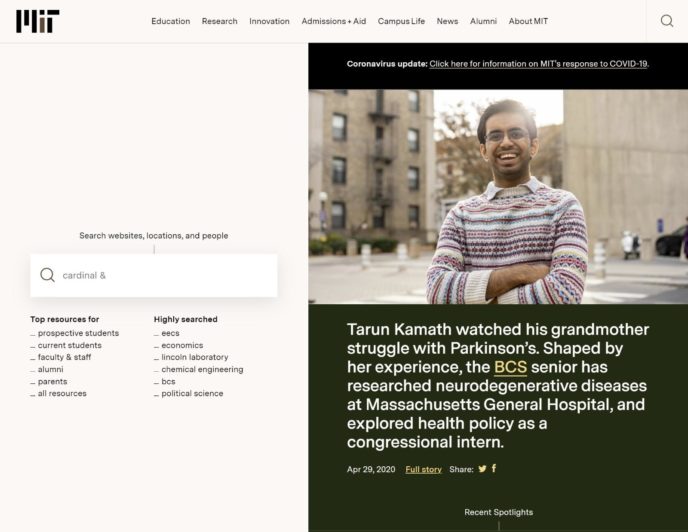


Joomla Examples
Compared with WordPress and Drupal, I wasn’t able to find as many examples of large brands or institutions using Joomla. I’m honestly not sure why that is.
However, you’ll still find enough to give you a good idea of the platform. Joomla also maintains its own Joomla showcase where you can find more examples of smaller websites.

Nintendo (some EU regional sites — not the main Nintendo site)
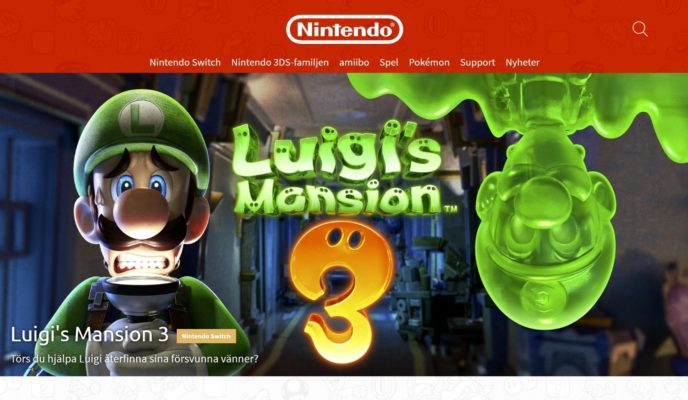
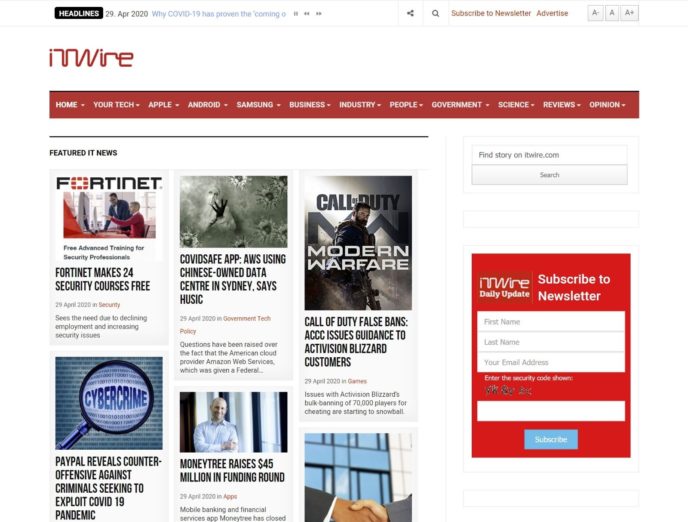
Any Questions?
It’s hard to cover every single aspect of these platforms because each CMS is incredibly detailed. However, I hope that by hitting the high-level differences in approach, costs, and so on, you’ll have a better understanding of which is the best CMS for your needs.
Used/using any of these platforms already? Thoughts?





All comments are held for moderation. We'll only publish comments that are on topic and adhere to our Commenting Policy.